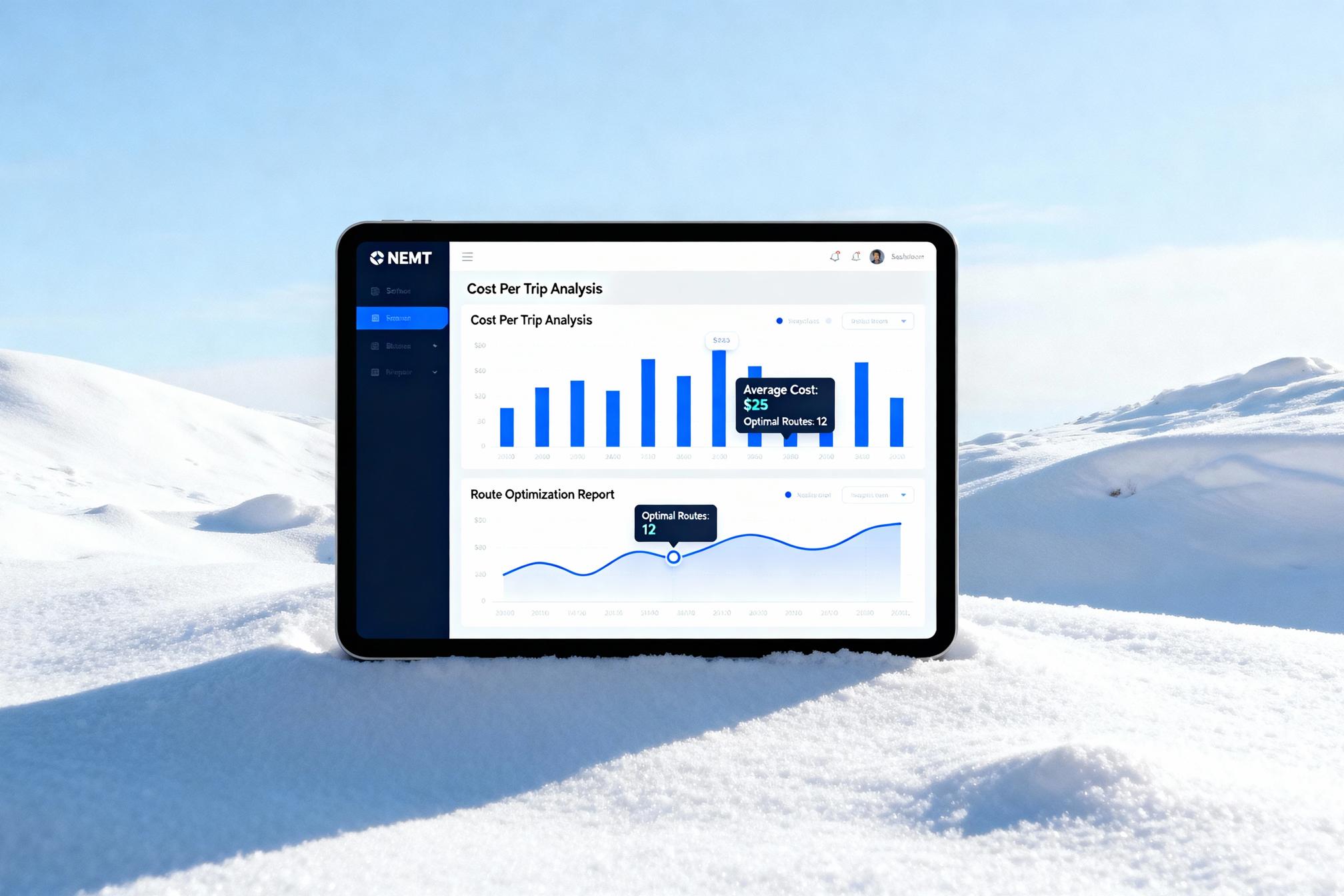Monday, November 3, 2025
How to Measure and Improve Key Operational Metrics in Your NEMT Business

Running a Non-Emergency Medical Transportation (NEMT) company requires you to watch performance numbers closely. Tracking the right metrics keeps your service reliable and profitable. Four key indicators tell you how well your operations work: vehicle use, on-time pickups, driver idle time, and cost per trip. With the right tools, you can measure, track, and act on these numbers every day.
Vehicle Utilization Rate
Vehicle utilization shows how much of your fleet’s time goes toward active trips instead of sitting idle.
Formula:
Vehicle Utilization (%) = (Time or miles with passengers ÷ Total available time or miles) × 100
Why it matters:
Unused vehicles cost money. Fuel, maintenance, and insurance continue even when a vehicle is parked.
How to improve:
- Target at least 75% active use during core hours.
- Review underused vehicles and reassign routes.
- Use NEMT software to see real-time use for each vehicle.
- Compare utilization by zone or driver to find gaps.
Example: A fleet with 20 vans sees only 60% active use. Reassigning low-demand vehicles to high-traffic zones can raise utilization to 80%, cutting wasted time and cost.
On-Time Pickup Rate
This shows how often you arrive within the promised pickup window.
Formula:
On-Time Pickup (%) = (Trips picked up on time ÷ Total trips) × 100
Why it matters:
Late arrivals reduce client trust and can cause missed appointments.
How to improve:
- Use live tracking to update drivers on route delays.
- Build short buffer times at the start of shifts.
- Review trips with late pickups to find recurring causes.
- Set alerts in your dispatch system when performance drops below 90%.
Example: A company improves from 84% to 94% on-time pickups by adjusting schedules and adding automatic driver alerts.
Driver Idle Time
Idle time is the period when a driver is available but not moving passengers. It increases cost and lowers productivity.
Why it matters:
Drivers get paid for logged-in time whether they move or wait. High idle time means lost efficiency.
How to improve:
- Track active vs idle hours for each driver.
- Limit idle time to under 10% of working hours.
- Reassign drivers to nearby zones during waiting periods.
- Review schedule gaps that create downtime.
Example: Reducing idle time from 25% to 12% can raise completed trips per driver by 15%.
Cost per Trip
This metric combines all expenses—fuel, wages, repairs, insurance, and overhead—into a single figure.
Formula:
Cost per Trip = Total Operating Costs ÷ Total Trips
Why it matters:
It helps you know if each trip earns enough to cover expenses.
How to improve:
- Monitor fuel and maintenance cost per vehicle.
- Use route planning to reduce dead miles.
- Compare costs between trip types to adjust pricing.
- Track cost spikes by driver or vehicle for quick correction.
Example: Lowering cost per trip from $45 to $38 can increase monthly profit without adding vehicles.
Using Software Dashboards to Track Metrics
Manual tracking wastes time. Dashboards in NEMT software give you real-time numbers.
A good dashboard shows:
- Vehicle use percentage
- On-time pickup rate
- Idle hours per driver
- Cost per trip trends
You can filter results by driver, vehicle, or service type. The system can also send alerts when targets fall short.
Visit nemtplatform.com or explore the Provider Panel to see how your data appears live and updated.
Practical Next Steps
- Review your current utilization, on-time, idle, and cost data.
- Set clear goals for each metric.
- Use your NEMT software to monitor results daily.
- Review weekly performance and take action when numbers drop.
- Request a demo of NEMT Platform to see these metrics tracked in real time.
How NEMT Platform Supports Smarter Operations
NEMT Platform gives you clear control over every trip and driver. It tracks performance numbers in real time, including vehicle use, pickup timing, driver activity, and cost per trip. You can view reports, set alerts, and take quick action without manual checks. The system brings together dispatch, scheduling, billing, and reporting in one connected space so your team can run daily operations with speed and accuracy.